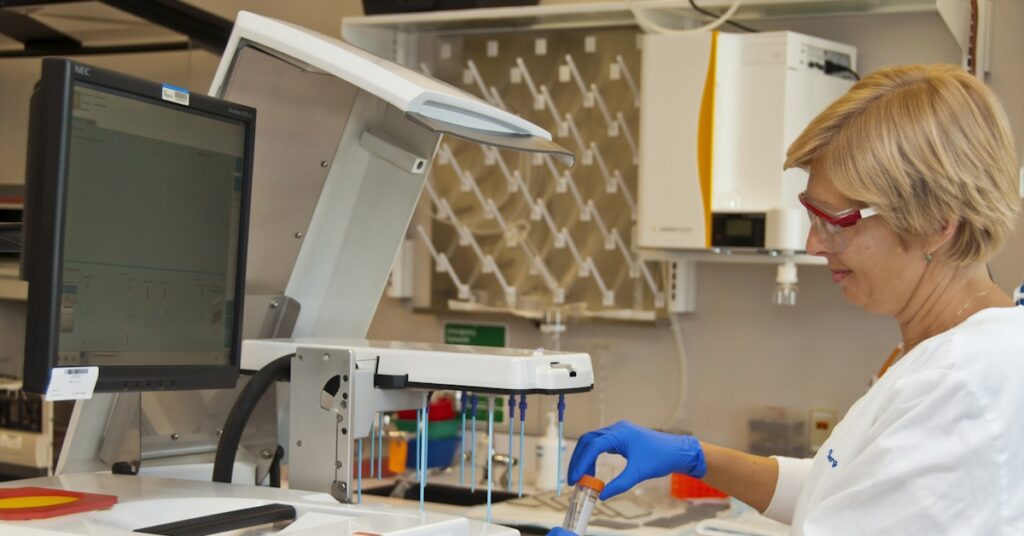Are your data connections slowing you down?
Traditional databases often struggle to process the complex web of relationships modern applications demand. This creates frustrating performance bottlenecks for your team.
This means you’re missing out on crucial insights hidden within your data connections, slowing your ability to drive real business value from them.
This isn’t just a small issue. As data grows, scalability limitations cause increased memory requirements and processing times. Your current system simply can’t keep up.
To truly overcome these data challenges, my guide on best data mapping software might also be helpful.
But what if you could model your data more intuitively? This article will show you how to find a platform that does just that.
In this guide, I’m going to review the best graph database platform options. These tools are designed to help you unlock powerful insights from your interconnected data.
You’ll discover how to enhance data discovery and finally visualize the complex connections that drive better business decisions for your organization.
Let’s get started.
Quick Summary:
| # | Software | Rating | Best For |
|---|---|---|---|
| 1 | Neo4j → | Technical data teams | |
| 2 | Amazon Neptune → | Large enterprises | |
| 3 | TigerGraph → | Global enterprises | |
| 4 | ArangoDB → | Data architects | |
| 5 | Memgraph → | High-velocity data orgs |
1. Neo4j

Struggling with complex, interconnected datasets?
Neo4j’s graph database stores data as connected nodes, intuitively mirroring real-world relationships, which is a game-changer. This means you can easily import data and model it as a graph, capturing entities and relationships without rigid schemas. This intuitive data model cuts schema design time from months to days.
Here’s how Neo4j helps you uncover hidden patterns.
Neo4j introduces features like AuraDB, a fully managed graph database, and Bloom, for easy visualization. Additionally, you can utilize the declarative Cypher Query Language to find patterns quickly, eliminating complicated JOINs and nested queries. You can also explore your data visually with interactive tools, helping you spot patterns and refine queries without extra coding. Plus, Neo4j Graph Data Science provides self-managed graph algorithms and machine learning modeling, while GraphRAG helps ground Generative AI responses in your real-world data for accurate results. The result? Faster insights and smarter decisions.
This leads to better decisions and strategies.
While we’re discussing data management, ensuring robust data recovery software is also crucial for business continuity.
Key features:
- Intuitive Data Modeling: Cut schema design time from months to days by modeling your data as a graph that mirrors real-world relationships.
- Fast Query Performance: Run queries up to 1000x faster than relational databases using index-free adjacency and simple Cypher queries, avoiding complex JOINs.
- Enhanced Insight & Visualization: Uncover hidden patterns and make smarter decisions with tools like Neo4j Bloom for easy graph visualization and exploration.
Neo4j features, pricing, & alternatives →
Verdict: Neo4j stands out as the best graph database platform for technical decision-makers and data professionals dealing with complex, connected datasets. Its ability to provide 1000x faster queries and flexible data modeling makes it ideal for use cases like fraud detection and Generative AI, helping your team extract valuable insights and drive business value.
2. Amazon Neptune

Struggling with complex, interconnected datasets?
Amazon Neptune offers superior scalability for managing intricate data relationships. This means you can handle massive graphs with unlimited vertices and edges.
This capability is crucial for organizations dealing with performance bottlenecks when querying relationships, ensuring your applications meet the most demanding analytical needs.
Want to unlock deeper insights?
Amazon Neptune provides powerful graph analytics, helping you find trends and insights from your data quickly. You can analyze billions of relationships in seconds using built-in algorithms.
Additionally, Neptune Analytics performs similarity searches on vectors for advanced Gen AI applications, offering robust security features like ACID transactions, encryption, and automated backups. Plus, it ensures high availability and durability, replicating data across three Availability Zones for robust disaster recovery. The result? Enhanced customer personalization, improved fraud detection, and more accurate machine learning predictions for your business.
Key features:
- High-performance database: Built for superior scalability and availability, handling unlimited vertices and edges with over 100,000 queries per second for demanding applications.
- Powerful graph analytics: Quickly analyze large datasets with tens of billions of relationships in seconds using built-in algorithms, vector search, and in-memory computing.
- Robust security and durability: Features include ACID transactions, continuous backups, point-in-time recovery, encryption, and 99.99% SLA availability across Availability Zones.
Amazon Neptune features, pricing, & alternatives →
Verdict: Amazon Neptune stands out as the best graph database platform for organizations seeking to transform complex data into actionable insights. Its high-performance analytics, robust scalability, and comprehensive security features empower you to build customer 360 views, detect fraud patterns, and enhance machine learning predictions with over 50% improved accuracy.
3. TigerGraph

Struggling with fragmented data and slow insights?
TigerGraph offers a powerful solution by providing unlimited parallel storage and computation for your crucial business needs.
This means you can uncover hidden value from all your data with unmatched intelligence, maximizing your competitive advantage.
It’s time to transform your data.
TigerGraph solves these issues by enabling you to build a digital twin of your entire operation, analyzing it holistically to evaluate all options and respond to opportunities and challenges in minutes, not months. The platform supports use cases like fraud detection, anti-money laundering, and real-time customer 360, providing critical insights. This allows you to deeply personalize experiences, integrating all your customer, product, and service data for seamless omnichannel interactions. Additionally, its AI-powered insights, like Hybrid Graph + Vector Search and the Graph Data Science Library, unlock deeper understanding and drive quicker decisions.
The result is blazing performance, 100-1000x faster.
Speaking of operational efficiency and data security, my guide on API security testing tools provides crucial insights for developers.
Key features:
- Massive scalability: Effortlessly scales enormous datasets across multiple applications and instances, self-hosted or fully managed on TigerGraph Savanna, handling 30-100X more data.
- Real-time analytics: Provides ACID compliance on distributed systems, ensuring integration with your operational systems and delivering up-to-date information for immediate decision-making.
- AI-powered insights: Unlocks hidden value and maximizes competitive advantage through features like Hybrid Graph + Vector Search and a comprehensive Graph Data Science Library.
TigerGraph features, pricing, & alternatives →
Verdict: For IT leaders and data architects aiming to overcome the limitations of traditional databases and gain actionable insights from complex relationships, TigerGraph stands out as a best graph database platform. Its focus on performance and scalability, demonstrated by ingesting data 2X faster than competitors and serving global enterprises like Ford and Xbox, directly addresses the need for intuitive data modeling, enhanced personalization, and efficient fraud detection.
4. ArangoDB

Struggling with complex, interconnected datasets and performance bottlenecks?
ArangoDB helps you manage these challenges by offering graph-native reasoning, vector search, and full-text insights.
This means you can overcome the limitations of traditional databases and gain a deeper understanding of your data, making it easier to visualize connections and extract actionable insights.
Ready to transform your data management?
ArangoDB’s multi-model database capability allows you to handle various data types like documents, key/value pairs, and graphs within a single unified platform. This flexibility means you can simplify your data architecture and reduce operational overhead.
Its unified query language (AQL) feels intuitive for anyone familiar with SQL, enabling fast access to all your data with diverse access patterns like traversals and JOINs. Additionally, ArangoDB supports advanced geospatial and full-text search capabilities, enhancing your ability to analyze complex relationships across different data dimensions, all while ensuring high availability and scalability for your critical applications.
The result is more intuitive data modeling.
While we’re discussing powerful data management capabilities, my article on best customer database software offers more insights.
Key features:
- Multi-Model Database: Combines graph, document, and key/value data within a single platform, simplifying data architecture and reducing operational complexity for diverse use cases.
- Unified Query Language (AQL): Offers a single, intuitive query language for all data models, making it easy to perform complex traversals, JOINs, and searches efficiently.
- Graph-Native Reasoning & Vector Search: Provides powerful capabilities for understanding deep data relationships and integrating AI-driven insights, essential for modern GenAI and data science applications.
ArangoDB features, pricing, & alternatives →
Verdict: ArangoDB is an excellent choice as the best graph database platform for technical decision-makers and data architects, particularly for those looking to implement graph database solutions for fraud detection, recommendations, and customer 360 views. Its unique multi-model approach, combined with robust graph capabilities, directly addresses the pain points of complex data relationships, enabling you to derive powerful insights.
5. Memgraph

Struggling with complex, interconnected datasets and slow queries?
Memgraph provides a powerful, light graph database tuned for dynamic analytics environments, handling over 1,000 transactions per second. This means you can efficiently manage your most intricate data relationships in real time.
You’ll discover that Memgraph’s architecture is specifically designed for high-velocity environments, making it ideal for mission-critical applications requiring instant insights.
It’s time to unlock deep data insights.
Memgraph solves the common pain point of performance bottlenecks when querying relationships, offering a scalable solution from 100 GB to 4 TB graph sizes. This allows you to visualize connections intuitively and personalize user experiences.
Its key capability is real-time analytics for high-velocity environments, ensuring you can extract actionable insights from complex relationships quickly. You can transform how your organization understands interconnected data.
Additionally, Memgraph features integrated Vector Search and GraphRAG, enabling leading organizations like NASA and Cedars-Sinai to build AI products with context-rich insights from enterprise data. This capacity to blend traditional graph analytics with advanced AI capabilities means you can derive deeper intelligence and drive significant business value from your interconnected information.
The result is truly transformative data understanding.
Key features:
- Real-time Analytics: Designed for high-velocity environments, handling over 1,000 transactions per second for both reads and writes on graph sizes up to 4 TB.
- AI Integration: Includes Vector Search and GraphRAG capabilities, empowering organizations to build AI products with context-rich insights from their enterprise data.
- Scalable Performance: A light yet powerful database that is easy to adopt, scale, and own, making it suitable for dynamic analytics and large, complex datasets.
Memgraph features, pricing, & alternatives →
Verdict: Memgraph stands out as a best graph database platform for organizations dealing with high-velocity, complex data, offering powerful real-time analytics, AI integration through GraphRAG, and scalable performance, as evidenced by its use by NASA and Capitec Bank.
6. Cambridge Intelligence

Struggling with complex, interconnected datasets?
Cambridge Intelligence offers developer toolkits like KeyLines and ReGraph, making it simple to build powerful, custom user experiences.
These tools help you overcome performance bottlenecks and visualize complex relationships, allowing your team to uncover insights and make sense of connections.
Here’s your solution.
Cambridge Intelligence solves the challenge of visualizing real-world, complicated data, turning it into intuitive, actionable insights.
Their KeyLines and ReGraph SDKs provide sleek, modern developer experiences, allowing you to build powerful, customized data visualization apps fast.
Additionally, MapWeave integrates map, network, and timeline insights into a single view, ideal for use cases like fraud detection, security & intelligence, and cybersecurity, helping analysts understand vast, complex, and highly-connected data.
Unleash the power of your data.
While we’re discussing risk and operational efficiency, understanding business continuity management software is equally important for long-term stability.
Key features:
- Graph visualization SDKs: KeyLines and ReGraph simplify the development of powerful, customized user experiences for complex graph data, enhancing understanding.
- Integrated geospatial and timeline insights: MapWeave and KronoGraph enable the unification of map, network, and timeline data, uncovering hidden connections and accelerating analysis.
- Expert support and tailored solutions: Benefit from expert assistance and flexible, high-performance toolkits that ensure rapid application delivery in weeks, not months.
Cambridge Intelligence features, pricing, & alternatives →
Verdict: Cambridge Intelligence provides developer toolkits perfect for creating the best graph database platform experience. Their solutions excel in visualizing complex data for fraud detection, cybersecurity, and law enforcement, helping your organization gain critical insights from intricate relationships efficiently.
Conclusion
Finding the right platform is tough.
Choosing the right graph database is overwhelming. You need a solution that manages complex relationships without the performance bottlenecks or steep learning curves that hinder your team.
It’s not just about technology. Enterprise Knowledge found that organizations addressing skills gaps see improved efficiency in graph implementations. Getting your team productive quickly is absolutely critical for achieving a positive ROI.
Here is what I recommend.
From my review, Neo4j stands out as the clear winner. It directly tackles the complexity and performance issues that slow down most data professionals.
If you’re also exploring specialized tools, my article on best hedge fund software offers comprehensive insights.
Its intuitive data modeling and 1000x faster queries make it the best graph database platform for gaining valuable, actionable insights. You’ll spend less time wrestling data.
I suggest you start a free trial of Neo4j and see how it transforms your organization’s data visualization and analysis capabilities.
Unlock your data’s hidden value.






